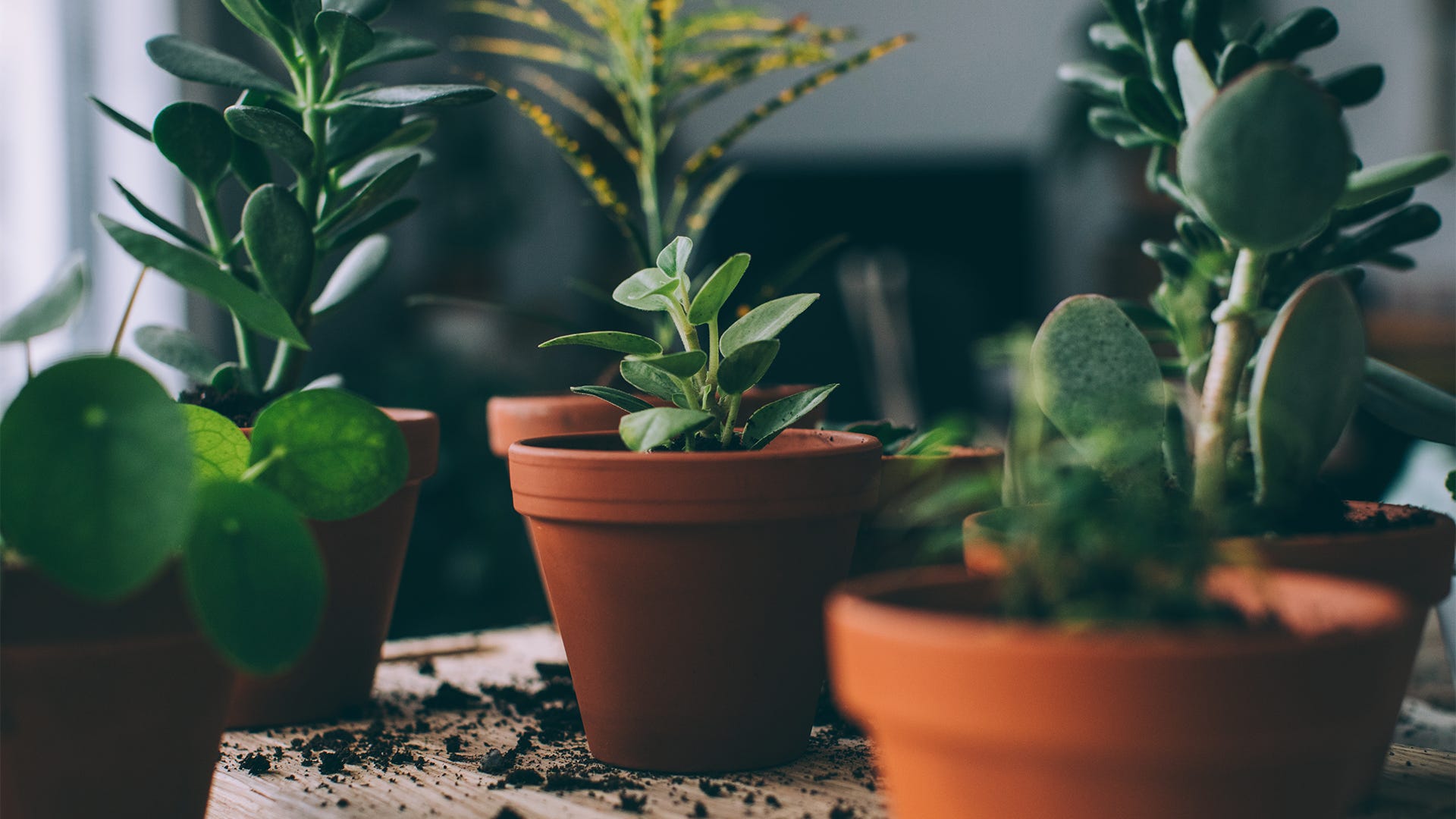
Pots are the foundation of your indoor garden. They hold plants upright and give roots room to spread out. The different types of hydroponic systems each are built around specific types of containers, but soil-based growers have a few choices of pots, too. With this quick guide, you'll be able to select the best for your needs.
Size Matters
Before you choose a container, consider how big your plants will be at maturity. You might think the easy answer is to just get the biggest container so any size plant will fit it. But in an oversized pot the soil mix can remain soggy because the little plants' roots are not able to absorb all of the moisture, leading to root rot and other problems that result when plants sit in water. In pots that are too small, plants' growth is restricted. A simple rule of thumb: Get 2 gallons of pot size for each 12 inches of expected plant height. So if the crop you're growing will reach 2 feet tall, its container should be about 4 gallons, while a 6-gallon pot is best for 3-foot-tall plants.
Buckets
You can use any food-grade plastic pail as a container for growing plants indoors. Many ingredients used by restaurants and other food-service operations come in buckets in handy sizes such as 2, 5 or 10 gallons. They typically are discarded, so you may be able to pick them up for free. You can also buy these buckets for about $5 at food service and nursery suppliers. Just be sure to clean any used bucket thoroughly before planting in it to ensure that lingering food residues don't become a host for fungi. Also, punch a few small holes an inch or two from the base to allow excess water to drain out. Handles make buckets easy to pick up and move, even when they're full of soil. They're made of plastic, so they are very durable and sturdy. The black plastic keeps light out, preventing algae from growing inside the containers and soaking up oxygen and nutrients.
Grow Bags
Fabric containers, sometimes sold as "smart pots," are made from permeable material that allows oxygen to reach plants' roots and excess water to leach out. They are lightweight so they're easy to move around. Since they are made from a soft material, they can be stored out of sight when not in use. Two-gallon sizes sell for $2.50 to $3 each, while 10-gallon bags cost around $10. They are reusable. The permeable fabric prevents plants from becoming root-bound because roots are "air-pruned," or blocked from continuing their growth as they extend outside the soil and into the air outside the pot. Air flow also helps dry out the soil swiftly, so plants don't get waterlogged. Faster drying of the soil means you may need to water more frequently if you are not using a feeding system that provides steady moisture and nutrients to your plants. Because excess moisture seeps out of the sides of the bags, you need to place a large saucer or tray beneath the pots to keep water from creating damp spots on the floor that will host destructive fungi.
Air Pots
Plastic containers perforated with holes on all sides are known as "air pots" because they allow so much essential oxygen to reach plants' roots. More air produces healthier, more robust plants. The holes allow for good drainage, too. Air pots cost $10 to $20, depending on the size, and they are reusable. In ordinary plastic containers, roots wrap around the inside of the pot, constricting into a tight ball. Air pruning (see explanation above) naturally limits the roots' length, causing the plant to produce new, healthy branching roots. While the tall, thin shape of air pots allows you to fit more containers in the space you have available, be aware that they can become top heavy and prone to tipping over when the plants get taller.
Seedling Trays
An efficient way to start your crop (seeds or clones) is in a cell-pack or seedling tray. You can grow a lot of plants in very little space and you can keep them consistently moist without overwatering them. You will however, need to transplant them to larger pots in about 4 to 6 weeks. Transplanting can stress plants and slow their growth. To minimize transplant shock, start with the same soil mix as in your larger container. Gently scoop the small plants out of the cells with as much soil attached as possible and dig holes in the new containers so that all the roots fit without crushing them. Many starter kits come with plastic lids to keep humidity high so seeds stay moist as they sprout. As soon as you see the first little plants poking up, be sure to remove the lid right away and don't use the lid when you're growing clones. Too much humidity can cause damping off, a fungal disease that kills new plants. Starter kits with 12 cells are available for less than $10.



